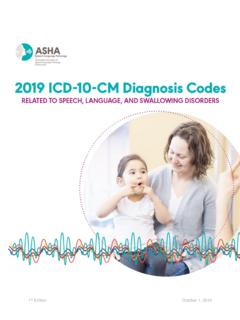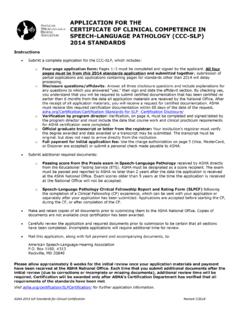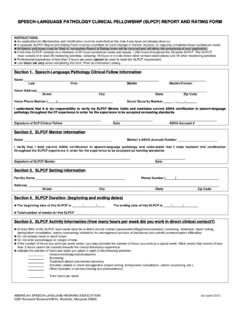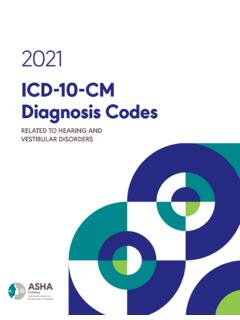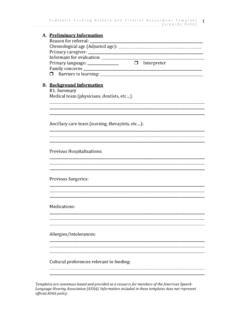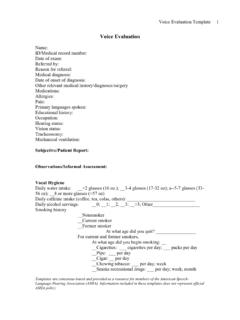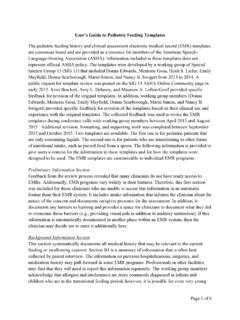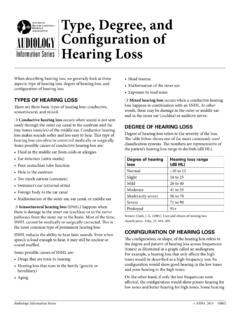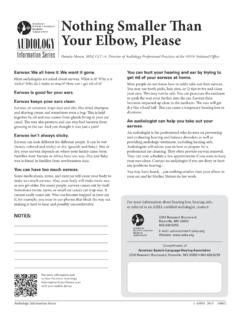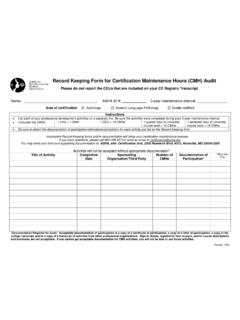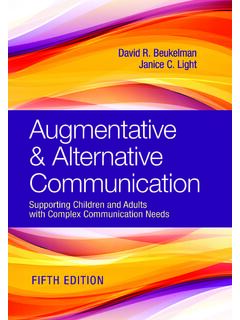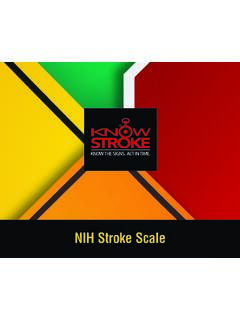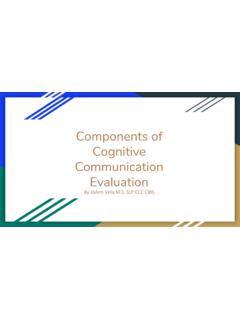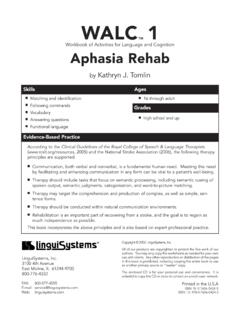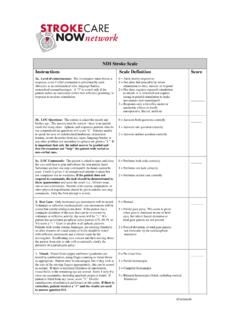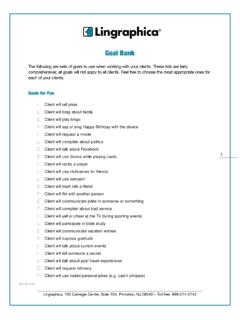Transcription of Common Classification of Aphasia - ASHA
1 Classification of Aphasia Nonfluent Fluent Speech production is halting and effortful. Person is able to produce connected speech. Grammar is impaired; content words may be preserved. Sentence structure is relatively intact but lacks meaning. Language comprehension Language comprehension Language comprehension Language comprehension relatively intact impaired relatively intact impaired Broca's Aphasia : repetition of Conduction Aphasia : word Wernicke's Aphasia : Global Aphasia : severe finding difficulties; difficulty repetition of words/phrases words/phrases poor expressive and receptive repeating phrases poor Transcortical Motor Aphasia : language impairment; may be strong repetition skills.
2 May able to communicate using Anomic Aphasia : repetition Transcortical Sensory have difficulty spontaneously facial expression, intonation, of words/phrases good; word Aphasia : repetition of answering questions and gestures finding difficulties; uses words/phrases good; may generic fillers ( , thing ) or repeat questions rather than circumlocution answering them ( echolalia ). This figure describes various Aphasia types, using a Classification system based on characteristics of verbal expression (nonfluent or fluent; Davis, 2007; Goodglass & Kaplan, 1972). Crossed Aphasia and subcortical Aphasia are considered exceptional aphasias, as they do not fit neatly within this or other Common Classification systems.
3 Crossed Aphasia occurs when a person demonstrates language impairment after suffering damage to the hemisphere on the dominant side of the body, rather than the alternate side. Thus, a right handed person who develops Aphasia following a right hemisphere stroke exhibits crossed Aphasia . Subcortical Aphasia results from damage to subcortical regions of the brain ( , thalamus or basal ganglia), and symptoms can mirror those that arise from cortical lesions. Primary progressive Aphasia (PPA) despite its name is a type of dementia. It is characterized by gradual loss of language function in the context of relatively well-preserved memory, visual processing, and personality until the advanced stages (Mesulam, 2001; Rogers, 2004).
4 For more information about PPA, see ASHA's Practice Portal page on Dementia. Davis, G. A. (2007). Aphasiology: Disorders and clinical practice (2nd ed.). Needham Heights, MA: Allyn & Bacon. Goodglass, H., & Kaplan, E. (1972). The assessment of Aphasia and related disorders. Philadelphia, PA: Lea & Febiger. Mesulam, M. (2001). Primary progressive Aphasia . Annals of Neurology, 49, 425-432. Rogers, M. (2004). Aphasia , primary progressive. In R. D. Kent (Ed.), The MIT encyclopedia of communication disorders (pp. 245-249). Cambridge, MA: MIT Press.
